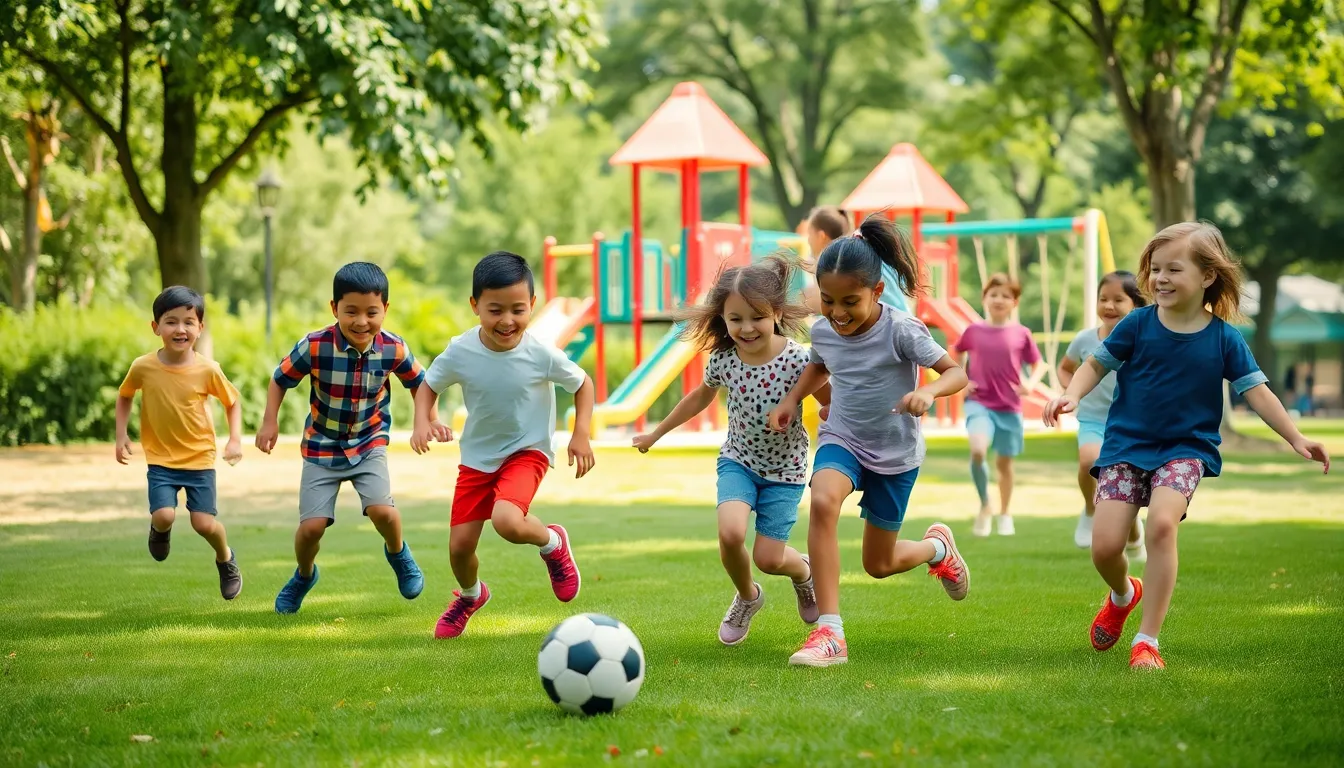Every parent knows the struggle: kids bouncing off the walls, boredom creeping in, and the dreaded “What are we doing today?” question looming like a storm cloud. Organizing kids’ activities doesn’t have to feel like herding cats in a room full of laser pointers. With a little creativity and planning, it can be a breeze—maybe even fun!
Imagine transforming chaotic afternoons into delightful adventures that keep kids engaged and parents sane. From arts and crafts to outdoor explorations, the possibilities are endless. Not only will organized activities spark joy, but they’ll also help kids develop essential skills while wearing them out—win-win! So buckle up, because organizing kids’ activities might just be the best decision you make this week.
Table of Contents
ToggleBenefits Of Organizing Kids Activities
Structured activities offer numerous advantages for children. Engaging kids in planned events not only entertains them but also fosters essential developmental skills.
Enhancing Social Skills
Organizing activities encourages children to interact with peers. Kids practice communication when they join games or participate in group projects. They learn to share, cooperate, and resolve conflicts while building friendships. Frequent collaboration in structured settings helps children adapt to various social situations. By facing challenges together, they gain confidence and develop empathy. Parents may notice improved social interactions, as kids become more comfortable expressing their thoughts and feelings.
Boosting Creativity
Activities stimulate imagination and creative thinking. When children engage in arts and crafts, they explore different materials and ideas. These experiences encourage problem-solving and innovative thinking. They gain opportunities to express themselves freely through creative outlets, revealing their unique perspectives. Varied activities spark curiosity, prompting kids to ask questions and seek answers. Exploration during playtime nurtures an inquisitive mindset, essential for lifelong learning. Overall, organized activities provide a rich environment for creativity to flourish.
Types Of Kids Activities


Organizing kids’ activities includes a variety of engaging options. Both indoor and outdoor activities play a crucial role in fostering creativity and skills.
Outdoor Activities
Outdoor activities promote physical exercise and social interaction. Games like tag or soccer encourage teamwork while providing a fun way for kids to burn off energy. Nature walks allow children to explore their environment, sparking curiosity about the world around them. Gardening can serve as a hands-on lesson in responsibility and biology, as kids learn to care for plants. Parents can also arrange playground visits, where children gain confidence through play with peers.
Indoor Activities
Indoor activities can be just as enriching for children. Craft projects encourage creativity and fine motor skills, giving kids opportunities to express themselves through art. Cooking or baking sessions teach valuable life skills, while also enhancing math skills through measurements. Board games promote strategic thinking and cooperation among players. Additionally, performing arts, such as dance or drama, stimulate imagination and boost confidence in public speaking.
Tips To Organize Kids Activities
Organizing kids’ activities makes it easier to engage them meaningfully. These tips help streamline the process and maximize enjoyment.
Planning Ahead
Scheduling activities in advance provides structure. Parents can create a weekly or monthly calendar to track events. Prioritize age-appropriate activities that align with children’s interests. Setting aside specific times for crafts, outdoor play, or quiet reading engages kids purposefully. Group activities with friends encourages socialization. Collect necessary supplies like art materials or sports equipment ahead of time to avoid last-minute scrambling. Having a variety of planned activities allows for flexibility; if one option doesn’t appeal, another is ready. Checking weather forecasts helps in deciding whether to venture outdoors or stay inside.
Keeping It Fun
Incorporating fun elements keeps kids interested. Use themes for activities, such as a pirate treasure hunt or a science experiment day. Adjust the complexity based on the group’s age for better engagement. Reward participation with small incentives like stickers or extra playtime. Encourage creativity by allowing kids to suggest activities. Mixing educational elements with play maintains focus while still being enjoyable. Change routines occasionally to prevent boredom and encourage excitement. Use music and movement to amplify enjoyment during activities. Fostering a positive environment motivates kids to explore activities enthusiastically.
Tools And Resources
A variety of tools and resources exist to help organize kids’ activities effectively. Utilizing these can enhance the experience for both parents and children.
Activity Planners
Activity planners streamline the process of organizing events. Many planners come with calendars, checklists, and templates specifically designed for kids’ activities. These resources help parents visualize upcoming events, prioritize themes, and allocate time efficiently. Options like physical planners or digital tools offer flexibility based on preferences. One example includes apps that allow parents to track activities and send reminders to kids. Engaging children in the planning process fosters ownership, allowing them to express their interests and select preferred activities.
Online Platforms
Online platforms serve as valuable tools for discovering and organizing kids’ activities. Websites and apps provide extensive databases of local events, classes, and playgroups. Parents can filter searches by age, interests, and location, making it easy to find suitable options. Social media groups often share community events and allow parents to connect with others. Blogs and online forums can offer inspiration and advice from experienced parents, enhancing ideas for engaging activities. Accessing these resources keeps parents informed and involved in their children’s experiences, ultimately enriching their activity choices.
Organizing kids’ activities is a fulfilling journey that enriches both parents and children. By embracing creativity and planning, families can transform ordinary days into extraordinary adventures. Structured activities not only entertain but also nurture essential skills that contribute to a child’s growth.
With the right tools and resources, parents can easily streamline the process and keep their kids engaged. Encouraging children to participate in planning fosters a sense of ownership and excitement. Ultimately, these organized activities pave the way for lasting memories and meaningful development, making every moment spent together worthwhile.


